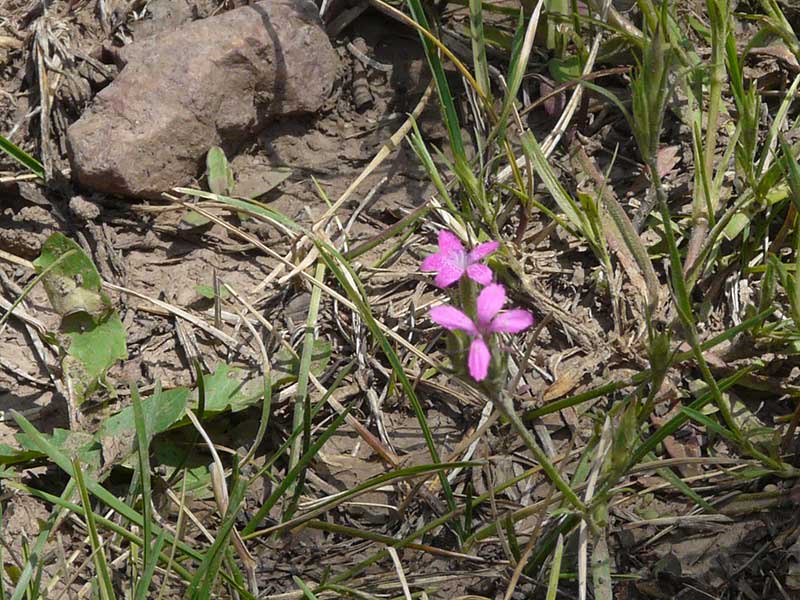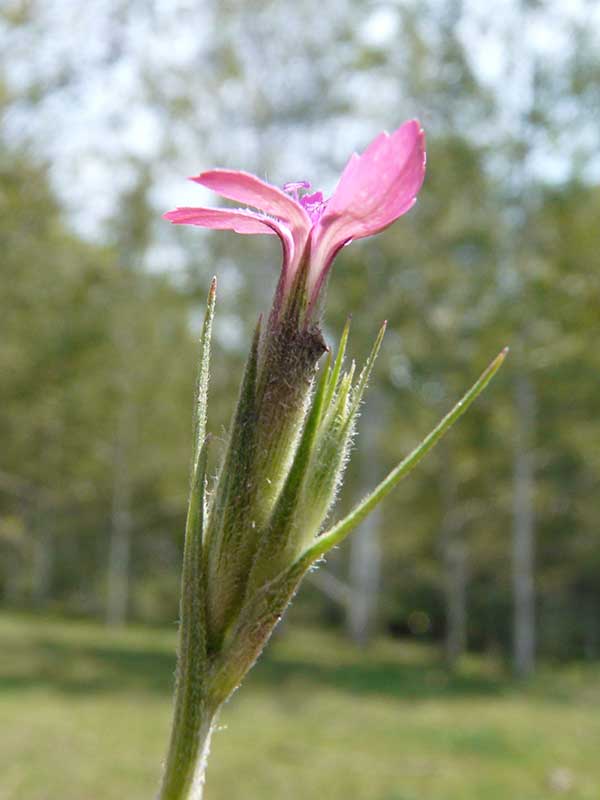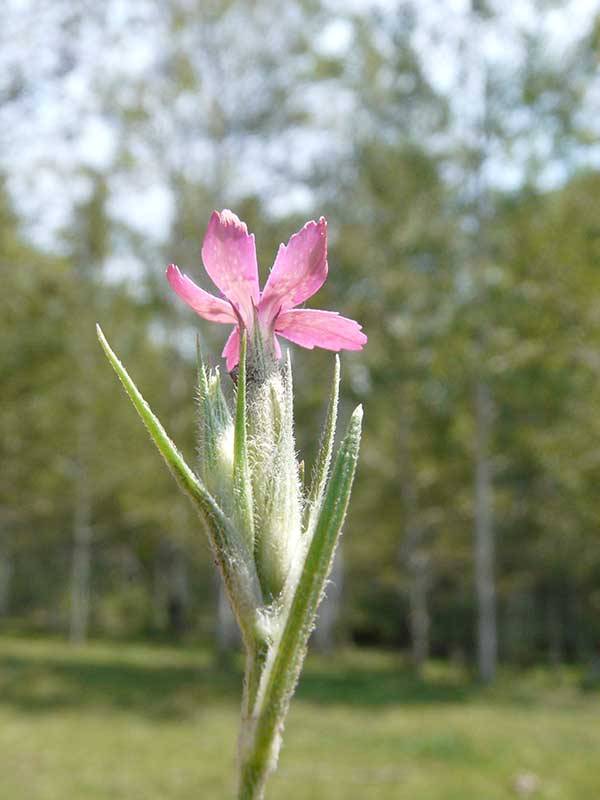Dianthus armeria / Deptford pink
- PINK! 5 petaled, very small flowers
- Toothed edges; white spots on petals, numerous stamens
- Linear, opposite leaves; bases make sheath around stem
- Disturbed areas; happy enough in the worst of soils
Also known as: grass pink, mountain pink (not unique), Deptford pink carnation
The Deptford pink is an herbaceous annual, quite easily overlooked when not blooming. Not so much when it is blooming as the teeny flowers are an atrociously loud pink color. If you can find it, it will be blooming at any time from spring though August. Don’t look in wetlands, but rather in the worst, leached out soils. It withstands trampling. It seems fond enough of compacted soils which is probably why it can be found in trampled pastures. It’s good with meadows, roadsides and wastelands. It will, however, grow taller and flower more in good soil with adequate water.
As for the actual flowers, they occur at the tips of stems, singly or in small clusters (this pretty much goes for everything in the Caryophyllaceae, a.k.a. the pink family). The flowering stalks are hairy, as are the sepals and the 3 leaf-like bracts surrounding them. The half-inch (max) flowers are smaller than those of cultivated relatives. The petals have toothed edges and numerous white spots. If you look really closely, there are numerous, bluish-purple anthers that stand out in the middle of each flower (these probably won’t show up in a cell phone photo). One more thing, the flowers close up in the afternoon.
The leaves are arranged in an opposite fashion along the stems above a basal rosette. They are linear, sessile and perhaps slightly pubescent. The bases make sheaths around the stem, bulging at the leaf node. This is also pretty common for the family. Although it has a slender taproot, it is not perennial; spreading is by reseeding.
D. armeria is not native to the US, but it does well in the wild. One could consider it invasive, but it is too small to be a serious threat in most places, certainly in the Valley. This did, apparently, happen in Deptford, England, however, and it is from that that the common name comes. Unfortunately, that area is now part of London and industrial, and the plant is pretty much absent.
One last thing, the name “pink” probably derives not from the color, but from the toothed edges of the flowers’ petals, the comparison being to the pattern left by pinking shears.
And another last thing, this species can sometimes be confused with Centaurium erythraea in the gentian family, which is about the same size and shade of pink but without dots on petals. That is another non-native found in Idaho, although I have not yet seen it.
| Color | |
|---|---|
| Family | |
| Blossom size | |
| Inflorescence size | |
| Inflorescence type | |
| When? | |
| Where? |


